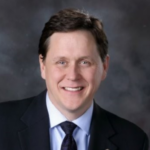Direct Primary Care (DPC) is a way of connecting health care providers and patients in a retainer-based service agreement. Under DPC, providers and patients agree on a fee to be paid to cover routine health care services. It does not replace health insurance and it must not be defined as insurance. The main barrier to the expansion of DPC is the complicated regulatory environments set up by state bureaucracies and consumer protection authorities who regulate insurance companies. DPC relationships are fee-based, and DPC providers may not bill an insurance company.
States should expand DPC opportunities to allow more types of provider-patient relationships. Reforms states may consider could include limiting the strict interpretations that attempt to define any provider as an insurance company if he or she charges a fee to treat a patient. States should also examine their prescribing laws to determine the safest way to provide more access to prescribing services and expand the DPC model to include more licensed providers. DPC laws should also change to reflect the new models of care being provided, where the physician is not always the primary care provider.
In 2015, Texas became the 13th state to pass DPC after a 2013 attempt to put “Direct Care” on the ballot as a constitutional amendment failed in committee. The Texas DPC law is consistent with the many others that were passed before and since in that the major provision of the bill defines DPC as not insurance. Unlike other states, Texas restricts DPC to physicians.
In 2023, Texas Rep. Matt Shaheen (R-Collin County) introduced House Bill 593, which would expand DPC in Texas. The bill extends DPC from solely physicians to physicians and “healthcare practitioner[s]” defined as, “an individual who holds a license, certificate, permit, or other authorization issued under this title to engage in a healthcare profession and who provides healthcare in the ordinary course of business or practice of a profession.” This important difference recognizes the growing importance of non-physician providers in meeting demand for primary care medical services.
The need to provide expanded access to primary care is an increasingly urgent challenge, particularly in rural areas. Currently there are 7,200 federally designated professional health care shortage areas. Three-in-five of these are in rural areas. There are 13 physicians/10,000 people in rural areas vs 31/10,000 in urban America. As rural physicians continue to retire, they are not being replaced, creating a widening gap of health care coverage for rural communities.
In the first year and a half of the pandemic, 18 percent of all medical professionals left the profession. Moreover, up to 47 percent say that they plan to leave the profession by 2025. A March 2023 Journal of Internal Medicine study found that 49.9 percent of the 40,301 health care workers surveyed met the criteria for burnout.
Other health care professionals, such as Physician Assistants (PAs) are stepping up and filling the doctor shortage made all the worse by the pandemic. States should address this by examining whether their statutes that are aimed at physicians as the exclusive provider of primary care might be improved by expanding care to other licensed health care providers.
For instance, Florida passed a DPC law in 2018 and was deliberate in broadly defining DPC contracts between patients and “primary care providers” as opposed to “physicians.” PAs can provide additional workforce to combat the shortage of physicians.
Because providers can eliminate time dealing with insurance companies, they are freed up to spend more time with patients, which saves money by utilizing efficient and proactive health care. Nationally, this has resulted DPC monthly costs that are routinely less than a cell phone bill.
Although the idea of DPC is still relatively new, the results speak for themselves. Total medical spend in DPC has been shown to save 20 percent and provide higher patient satisfaction.
Consolidation in health care delivery systems, and a strong demand for more personalized care have fueled rapid growth for DPC since its launch in 2006. Under states with DPC, providers spend more time with patients and spend less time completing paperwork. DPC practices usually have fewer patients than traditional primary care practices, typically fewer than 1,000 and most often around 200 to 600.
The Council of State Governments (CSG) has provided leadership in helping states to extend professional licensure across state lines. This is helping to address the primary care shortage through interstate professional licensure compacts for both physician and non-physician primary care providers. States should embrace this concept for direct primary care as well so that patients can get the care that they need in a timely manner and for an affordable price.
The following resources provide additional information about Direct Primary Care and Direct Patient Care
“Direct Primary Care, Delivering Exceptional Care on Your Terms,” American Family Physician Journal, Jan, 2021 https://www.aafp.org/family-physician/practice-and-career/delivery-payment-models/direct-primary-care.html The AAFP discusses the concept of Direct Primary Care for patients and providers.
AnnMarie Shieber, Senior Policy Fellow and Editor of the Heartland’s Healthcare News details the attacks against Direct Primary Care and why its important.
Tethered to HER: Primary Care Physicians Workload Assessment https://www.annfammed.org/content/15/5/419.full The Annals of Family Medicine reveals that primary care doctors spend nearly half of their time documenting EHRs and dealing with insurance companies.
Texas Public Policy Foundation: Direct Primary Care, Legislator’s Guide https://www.texaspolicy.com/wp-content/uploads/2020/09/2021-22-Lege-Guide-1-pager-ROH-Direct-Primary-Care1.pdf TPPF provides the basics on the Texas DPC law and how it could be improved
Healthcare News talked with Marilyn Singleton, MD President of the American Association of Physicians and Surgeons about what DPC has to offer to meet difficult challenges ahead.
Nothing in this Research & Commentary is intended to influence the passage of legislation, and it does not necessarily represent the views of The Heartland Institute. For further information on this and other topics, visit the Budget & Tax News website, The Heartland Institute’s website, and PolicyBot, Heartland’s free online research database.
The Heartland Institute can send an expert to your state to testify or brief your caucus, host an event in your state, or send you further information on a topic. Please don’t hesitate to contact us if we can be of assistance! If you have any questions or comments, contact Heartland’s government relations team at [email protected] or 312/377-4000.




